Configure backup shares
This article applies to:
- OS: Mac, Windows and Linux
- Product edition: inSync Cloud and On-Premise
Overview
It is essential to first understand what is a folder under “Backup Content”.
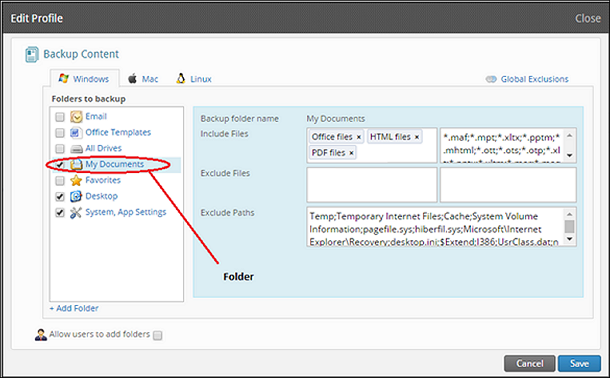
As you can see in the above image, the following elements have been set for backup on Windows:
- My Documents
- Desktop
- System, App Settings
The above items are referred to as Folders in logical terms.
Note: System or App settings do not have the option of exclude files, include files and exclude paths. This is because the backup process backs up your current system and folders where the application settings are predefined. You can modify this by installing a customized XML file for system and app settings.
Set up basic shares
You can always set up the following basic shares.
- On Windows: Desktop, My Documents and Favorites for user backup.
- On Mac: Email, Desktop and Documents
- On Linux: Email and Desktop
Changes made to the filters, such as Include files, Exclude files, and Exclude paths, trigger scans. Therefore, you must configure the profile before deployment.
PST files of Outlook
If you have planned to backup Outlook, you must use the option of 'Optimized for efficiency," as it is more effective and faster than "Optimized for performance".
For more information Outlook backups, please refer the FAQs on how inSync backs up Outlook PST files.
All drives
To perform "All drives" backup, you must carefully mention what you select in Include files option to make sure you back up the correct and necessary data. Irrelevant data such as images and video files, which consume excessive data, can lead to quota exhaustion. Avoid selecting the All files on all drives as it will add the *.* extension which will backup all files on all the drives. For folders which are not to be backed up, take special care to mention them in the Exclude paths.
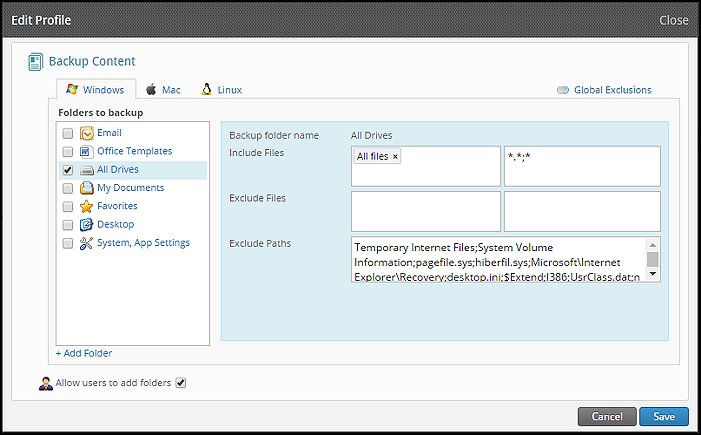
For more information on backup, refer to Tips for configuring "All drives" share.
Office templates
When backing up Office templates, a list of predefined extensions are populated in Box 2, next to Include files as seen below. You can manually add missing extensions to the list.
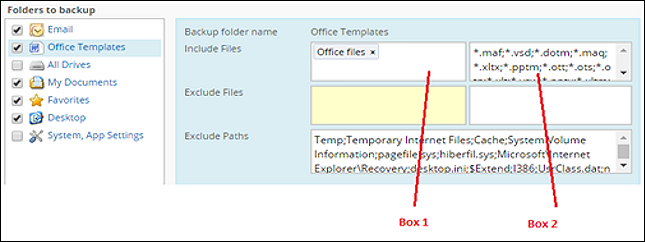
Druva does not recommend backing up applications since inSync Client does not use the specific VSS writer to back it up.
Global variables
If the existing list of shares does not cover your requirement, you can always add custom folders and use global variables to backup, such as backing up an active directory user profile.
Note: The custom folder will be added to all the users present under the profile so care should be taken to identify the user’s need for this requirement and if any user do not, then the profile should not be applied to such users.

List of global variables you can use on respective operating systems:
- Windows - %username%, %userprofile%, %username%, %homedir%
- Linux - %userprofile%, %homedir%, %username%
- MAC - %appdata%, %userprofile%, %homedir%, %username%
For more information on global variables, refer Configure custom folders for backup.
Exclude files, folders and paths
Folders which must be excluded from backup, such as system files or application files, must be added to Exclude Paths. Verify whether the relative path to such folders is pre-populated in Exclude Paths.

When allowing the users to add folders from inSync client, you are recommended to put Global exclusions to make sure irrelevant data is not backed up.
You can see from the image below if you selec the Allow users to add folders checkbox, inSync Client users from that profile can add folders that they wish to backup.
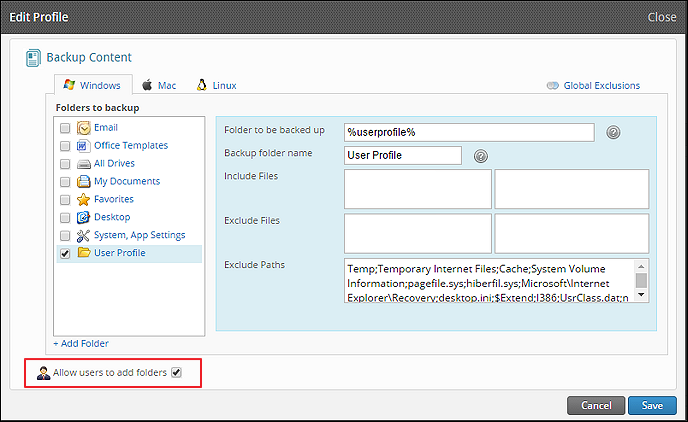
Global exclusions
Use Global exclusions tab to globally exclude backup of files from their specified paths. The setting becomes applicable to all users under that profile.
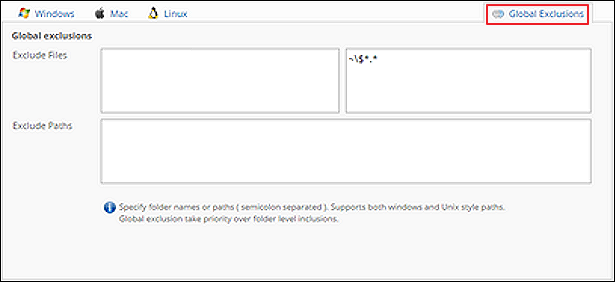
Include and exclude settings
For every other folder excluding System, App settings you can have the below options:
- Include files
- Exclude files
- Exclude paths ( for this check the article for more information: Configure the global exclude list. )
Let us focus on the above terms to understand how they impact on backups.
Include files
In this scenario, the backup folder is “My Documents”, so include files means it will include office files, HTML files and PDF files. Apart from these, you can also include: Audio files, Video files, Executable files, Image files, Email files and lastly All files, which you see in the Box 1.
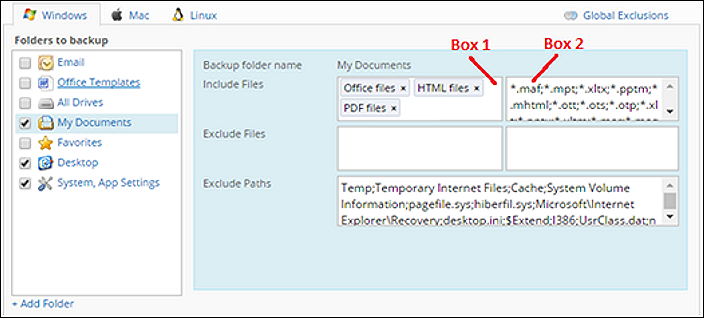
When selecting the option of “All files” It means it will basically backup all files present under “My Documents”, except any sub folders specified in the Exclude Paths and any files specified under the Exclude Files.
In the above image, we can see three options are selected: Office files, HTML files and PDF files which suggest if you are setting up to back up the “My Documents” for a user, inSync client will back up any office, HTML and PDF files which have the extensions present in Box 2.
Note: If there are any specific extensions which are not present, in the Box 2, you can manually enter them and inSync will backup it up.
Exclude files
In this scenario, the backup folder is “My Documents”, so exclude files means it will exclude Image files and Video files as seen from the above image. inSync client will not backup image files and video files from the backup folder “My Documents”.

As shown in the above image, the file types mentioned in Box1 and the file extensions mentioned in Box2 will be excluded from backup. Once you add a file type in Box1, some predefined extensions associated with the file type are populated in Box2. You can manually add extensions which you find are missing in Box2.
Note: You can cannot have the same files listed under Include Files and Exclude files. For example, you cannot have office files present in Include files as well as in Exclude files. If you try to select it, you will get an error as seen below:
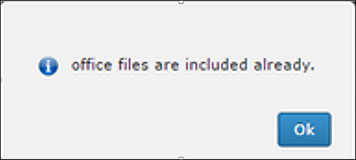
Global exclusion takes precedence on all includes and it does not pop up such error message.

